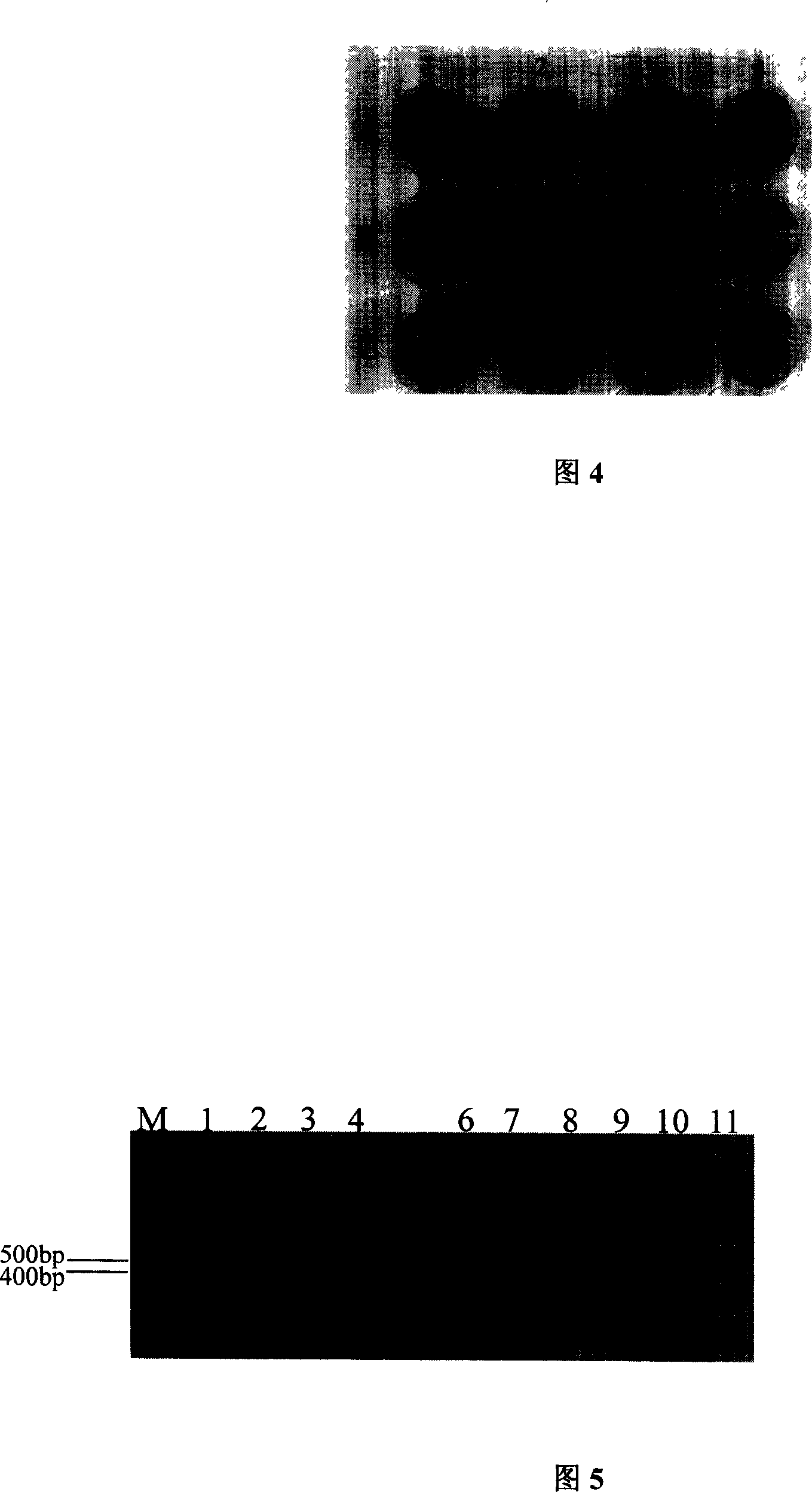Method of screening transgene barley strain without antibiotic mediated by agrobacterium
An Agrobacterium-mediated, antibiotic-free technology, applied in botany equipment and methods, biochemical equipment and methods, genetic engineering, etc.
- Summary
- Abstract
- Description
- Claims
- Application Information
AI Technical Summary
Problems solved by technology
Method used
Image
Examples
Embodiment 1
[0065] Example 1: Agrobacterium-mediated genetic transformation of barley without antibiotics
[0066] 1. Induction of callus
[0067] Young barley embryos with a width of about 0.5 mm to 1.5 mm and translucent color (variety Zaoshu No. 3 - from Hubei Academy of Agricultural Sciences) were used as explants. First, the immature barley seeds were sterilized with 70% ethanol for 30 seconds, rinsed once with sterile water, then sterilized with 0.1% mercuric chloride for 8 minutes, and rinsed with sterile water three times, each time for 3 minutes. The explants were stripped, and the explants were inoculated on the induction medium (see the "Summary of the Invention") with the scutellum facing up, and cultured at 25° C. in the dark to induce callus.
[0068] 2. Pre-cultivation of callus
[0069] From the callus obtained in the first step, the vigorously growing callus was picked and inoculated onto the pre-culture medium (see the "Summary of the Invention" section), and cultivate...
Embodiment 2
[0082] Embodiment 2: Chlorophenol red chromogenic method (CPR) detection of transformed plant
[0083] Choose the newly grown leaf on the main stem of the transformed plant of Example 1, cut the leaf tip section with an area size of about 0.3cm * 0.5cm, and immerse the leaf section in the chlorophenol red liquid detection medium (see the composition of the medium for the test medium). In the preparation part of the chlorophenol red liquid detection medium in "Summary of the Invention", observe the color change of the medium after culturing at 25° C. in the dark for 4 days. Cut the leaf segment of untransformed plant according to same requirement simultaneously, immerse respectively in the chlorophenol red liquid detection medium and the chlorophenol red liquid contrast medium (referring to " the content of the invention " the preparation part of the chlorophenol red liquid contrast medium), specifically For the operation steps, refer to the "Summary of the Invention" section, ...
Embodiment 3
[0084] Embodiment 3: PCR detection to transformed plant
[0085] Take about 0.1 g of leaves of barley transgenic plants, grind them into powder in liquid nitrogen, and extract the total DNA of barley by conventional CTAB method (refer to the method disclosed by the applicant's patent application No. 200610019482.0). A pair of specific primers Primer1 (forward, 5'-GTTTCTTTTGTCGATGCTCACCC-3') and Primer2 (reverse, 5'-TCCGGCTTGTGGTTAGGATC-3') were designed for PCR amplification. In 25ul PCR reaction solution, containing 300ng template DNA, 2.5ul PCR buffer, 1.5ul 25mM MgCl 2 , 2ul 1.25mMdNTPs, 0.5ul Primer1 (10pmol / ul), 0.5ul Primer2 (10pmol / ul), 1U Taq polymerase. The PCR reaction conditions were: 95°C for 5 min; 94°C for 1 min, 58°C for 50 sec, 72°C for 90 sec, 35 cycles; finally 72°C for 5 min, 10°C for 10 min. After the reaction was completed, 18ul of the PCR product was electrophoresed on a 1.2% agarose gel. In the gel imaging system, take pictures under ultraviolet light...
PUM
 Login to View More
Login to View More Abstract
Description
Claims
Application Information
 Login to View More
Login to View More - R&D
- Intellectual Property
- Life Sciences
- Materials
- Tech Scout
- Unparalleled Data Quality
- Higher Quality Content
- 60% Fewer Hallucinations
Browse by: Latest US Patents, China's latest patents, Technical Efficacy Thesaurus, Application Domain, Technology Topic, Popular Technical Reports.
© 2025 PatSnap. All rights reserved.Legal|Privacy policy|Modern Slavery Act Transparency Statement|Sitemap|About US| Contact US: help@patsnap.com



